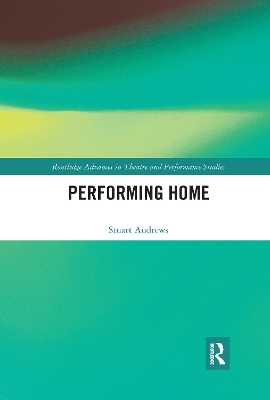Routledge Advances in Theatre & Performance Studies
2 total works
Performing Home is the first sustained study of the ways in which artists create artworks in, and in response to, domestic dwellings.
In the context of growing interest in ideas and practices that cross between architecture, arts practice and performance, it is valuable to understand what happens when artists make work in and about specific buildings. This is particularly important with domestic dwellings, which can be bound up with experiences, issues, practices and understandings of home. The book focuses on a range of recent artistic projects to identify and investigate critical ways by which artists practise domestic dwellings. In doing so, it addresses the ways in which artists enquire into a dwelling, are resident in a dwelling, adapt the form of a dwelling, practise a mobile dwelling, and make a dwelling. By considering these practices together, Andrews demonstrates the breadth and significance of recent artistic engagement in and with domestic dwellings and highlights the contribution that artistic practice can make to the ways in which we understand the form and practice of a building.
Performing Home will be of particular relevance to scholars, students and practitioners in architecture, art and performance, to those in geography, material culture and cultural studies, and to anyone seeking to make sense of the place in which they live.
The Dramaturgy of the Door examines the door as a critical but under-explored feature of theatre and performance, asking how doors function on stage, in site-specific practice and in performances of place.
This first book-length study on the topic argues that doors engage in and help to shape broad phenomena of performance across key areas of critical enquiry in the field. Doors open up questions of theatrical space(s) and artistic encounters with place(s), design and architecture, bodies and movement, interior versus exterior, im/materiality, the relationship between the real and the imaginary, and processes of transformation. As doors separate places and practices, they also invite us to see connections and contradictions between each one and to consider the ways in which doors frame the world beyond the stage and between places of performance.
With a wide-ranging set of examples – from Shakespeare’s Macbeth to performance installations in the Mojave Desert – The Dramaturgy of the Door is aimed at performance makers and artists as well as advanced students and scholars in the fields of performance studies, cultural theory, and visual arts.

